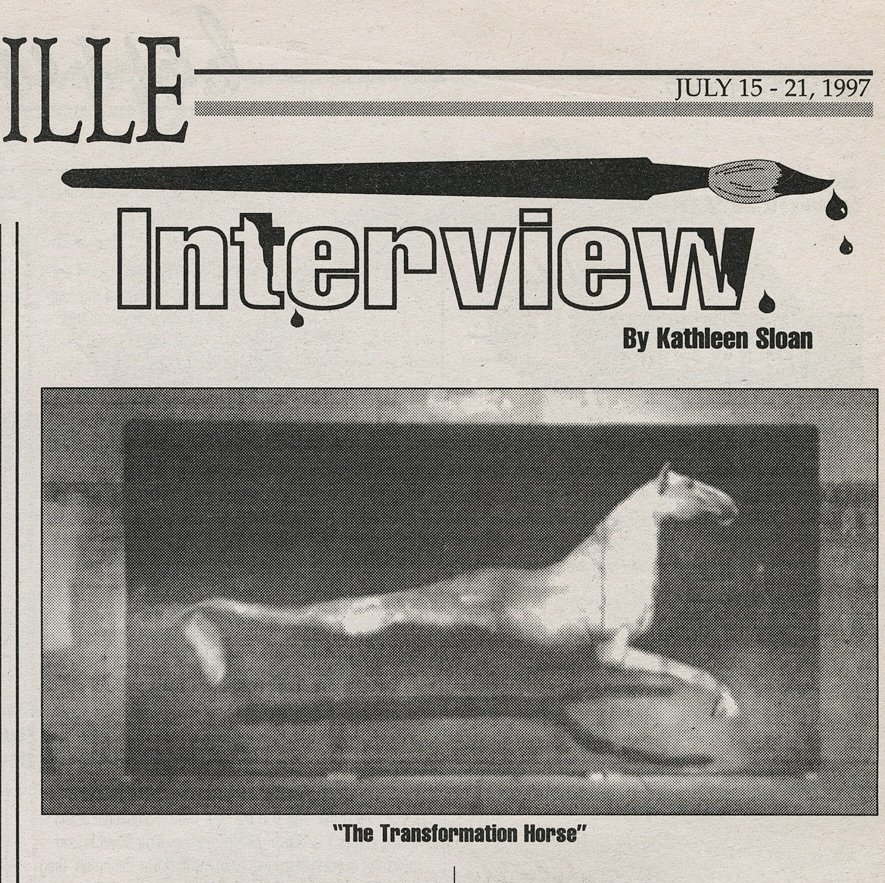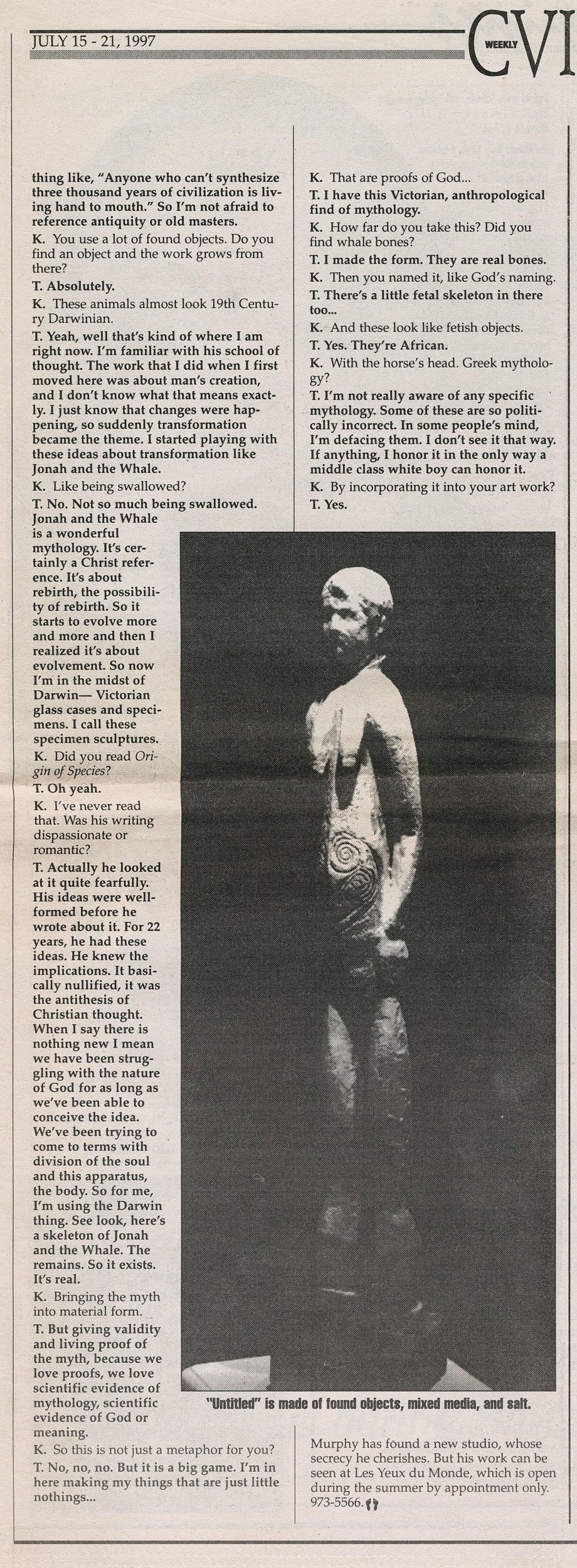-
Revealing a gift for seeing the possibilities of materials and found objects, Murphy also makes his own sculptures. Like the microphone made of two thimbles or the toylike finned horse that moves around as on a weird carousel, they are often whimsical. They are sometimes fetishlike and nearly always visually interesting.
Fox, Catherine. Murphy’s Show of Imagination, The Atlanta Journal-Constitution, December 26, 1997
-
Todd Murphy (1962-2020), American experimental artist known for his extraordinary use of materials, immersive experiential environments and his prolific output transcending scales from monumental to microscopic.
Todd Murphy b. 1962, Chicago, IL. d. 2020 New York, NY
Murphy lived and worked in Brooklyn, NY, Charlottesville, VA and Atlanta, Ga.
-
Todd Murphy b. 1962 Chicago. IL. , d. 2020 New York, NY
Murphy lived and worked in Brooklyn, NY, Charlottesville, VA and Atlanta, Ga.
-
Picasso's inventive spirit pervades the room, as do references to Brancusi (in the crudely carved wooden bases) and the early 20th-century artists' discovery of African art, something that Murphy has always been interested in. Murphy seems to want to revive the age-old connection between art and magic intrinsic to African art, even if it's the magic of children rather than spiritualists, like the skeleton of a hand casting a shadow that looks like a goose on the wall. This is the kind of show you can visit many times and still discover things you missed.
Fox, Catherine. Murphy’s Show of Imagination, The Atlanta Journal-Constitution, December 26, 1997
-
"lt’s about signal sending, animal markings, technological devices. Anything that's about signs that send messages," he says. It's a lot of animals, a lot of patterns. Some animals are patterned to conceal, some are patterned for mating, for display. Some are false, fake eyes on their backs. "lt all becomes part of a bigger pattern. it's a silly metaphor that makes perfect sense to me. We have our time, we send out our signals and we move on. And that becomes part of a bigger pattern." So that's something. "Why is it that we have such difficulty communicating, when other animals seem to do it so well," he wonders. "Or do we?"
Brenna Sanchez interview Todd Murphy
TODD MURPHY Images that speak for themselves,
Hour, Detroit, 1997



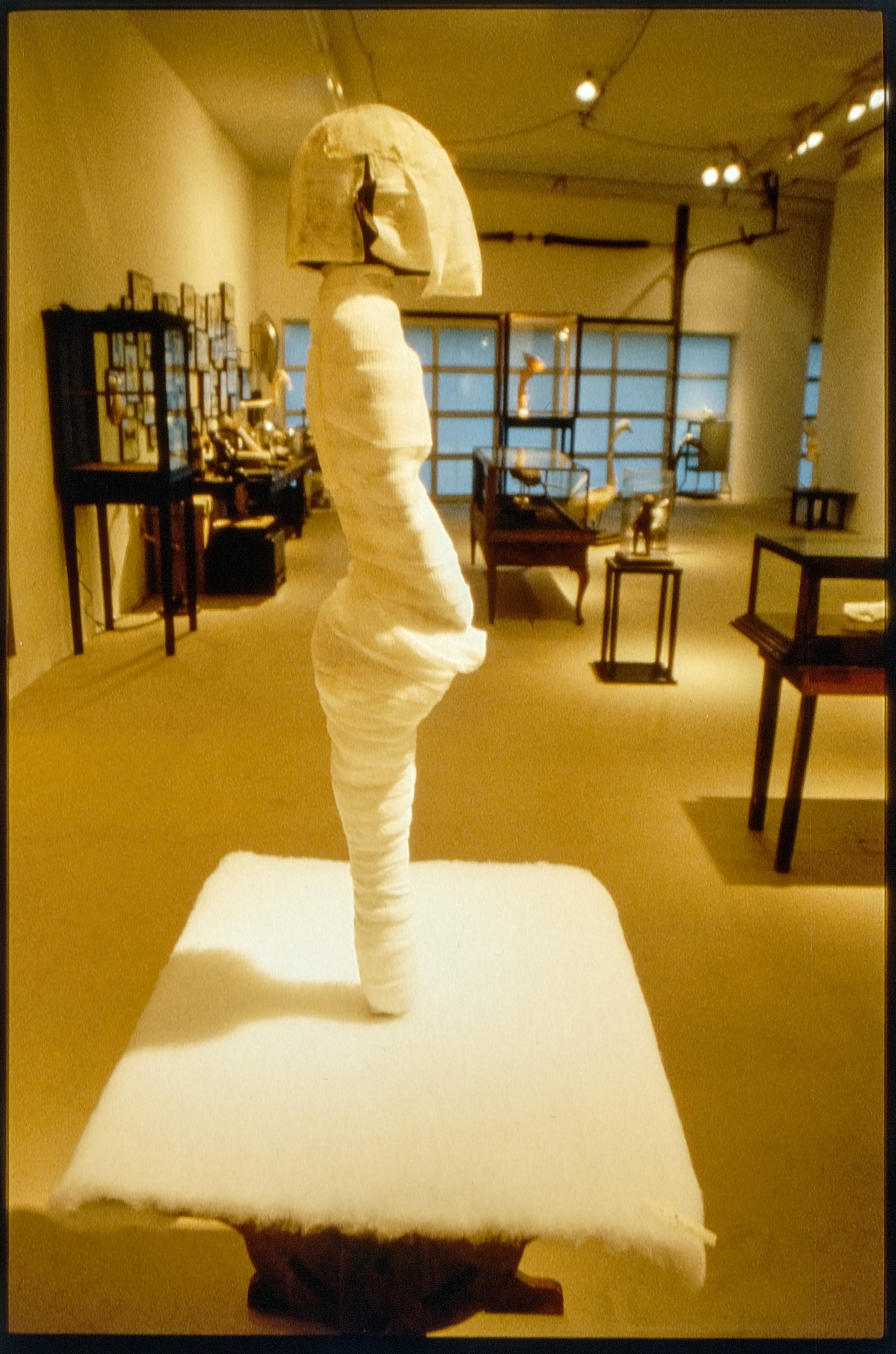
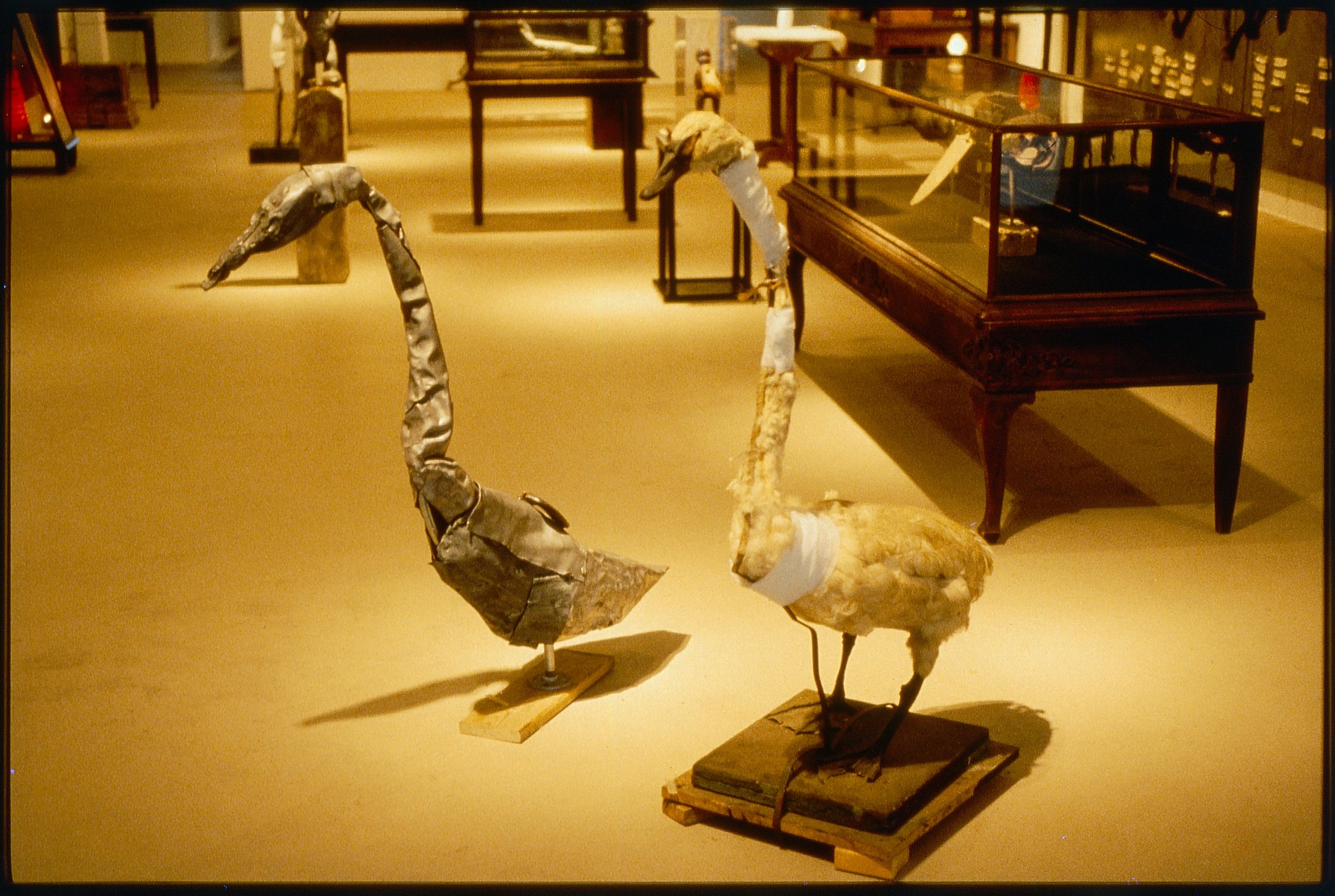


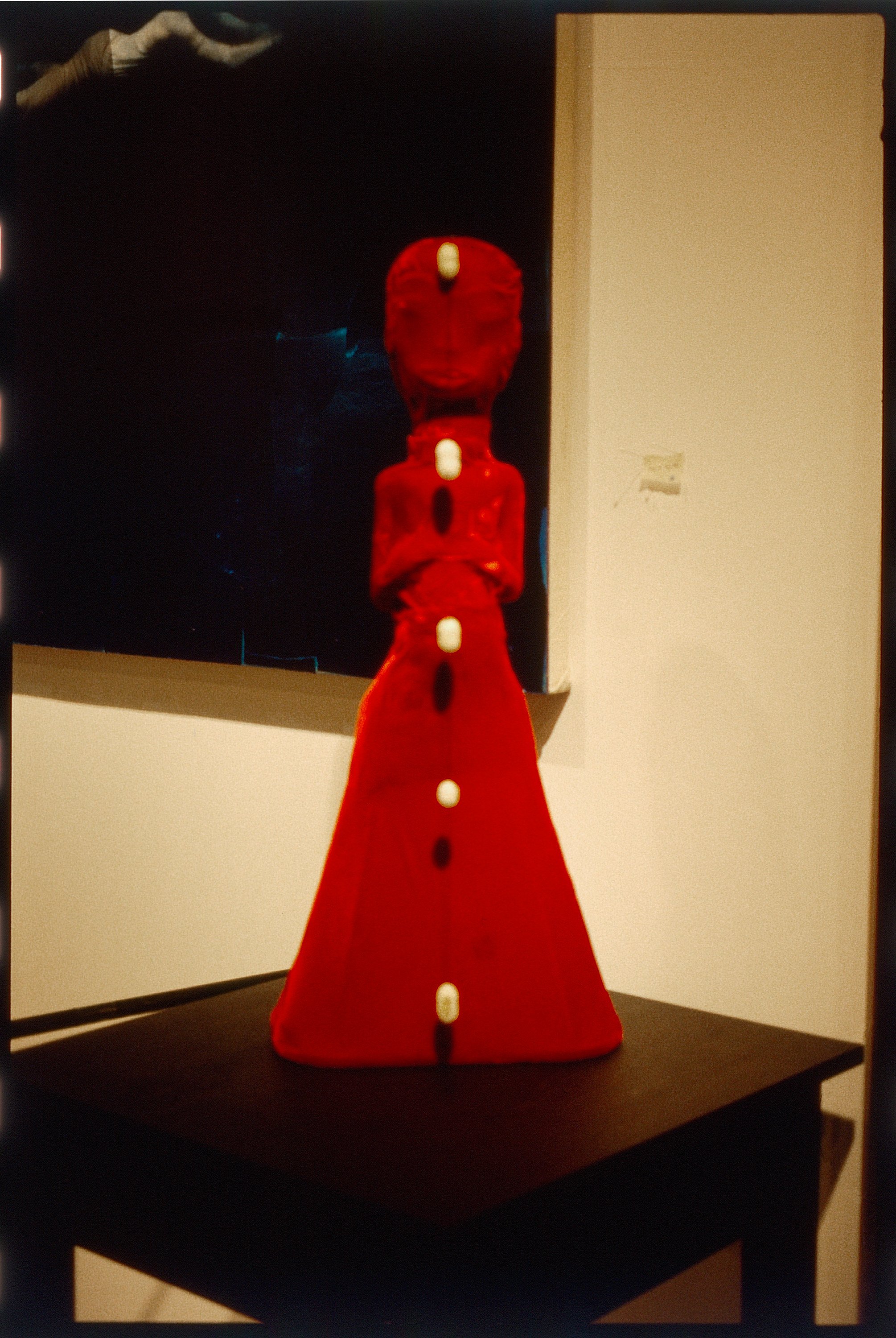
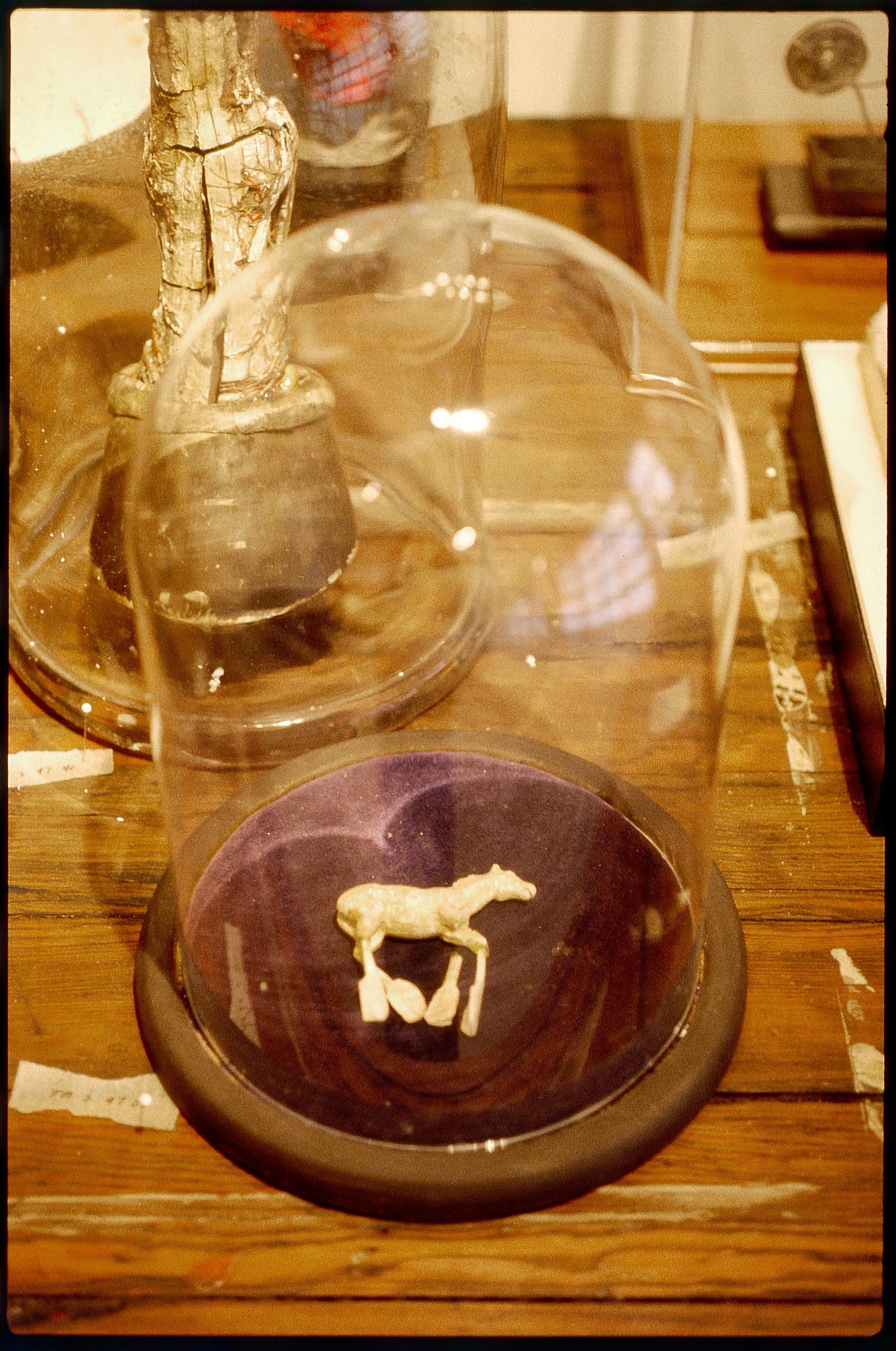
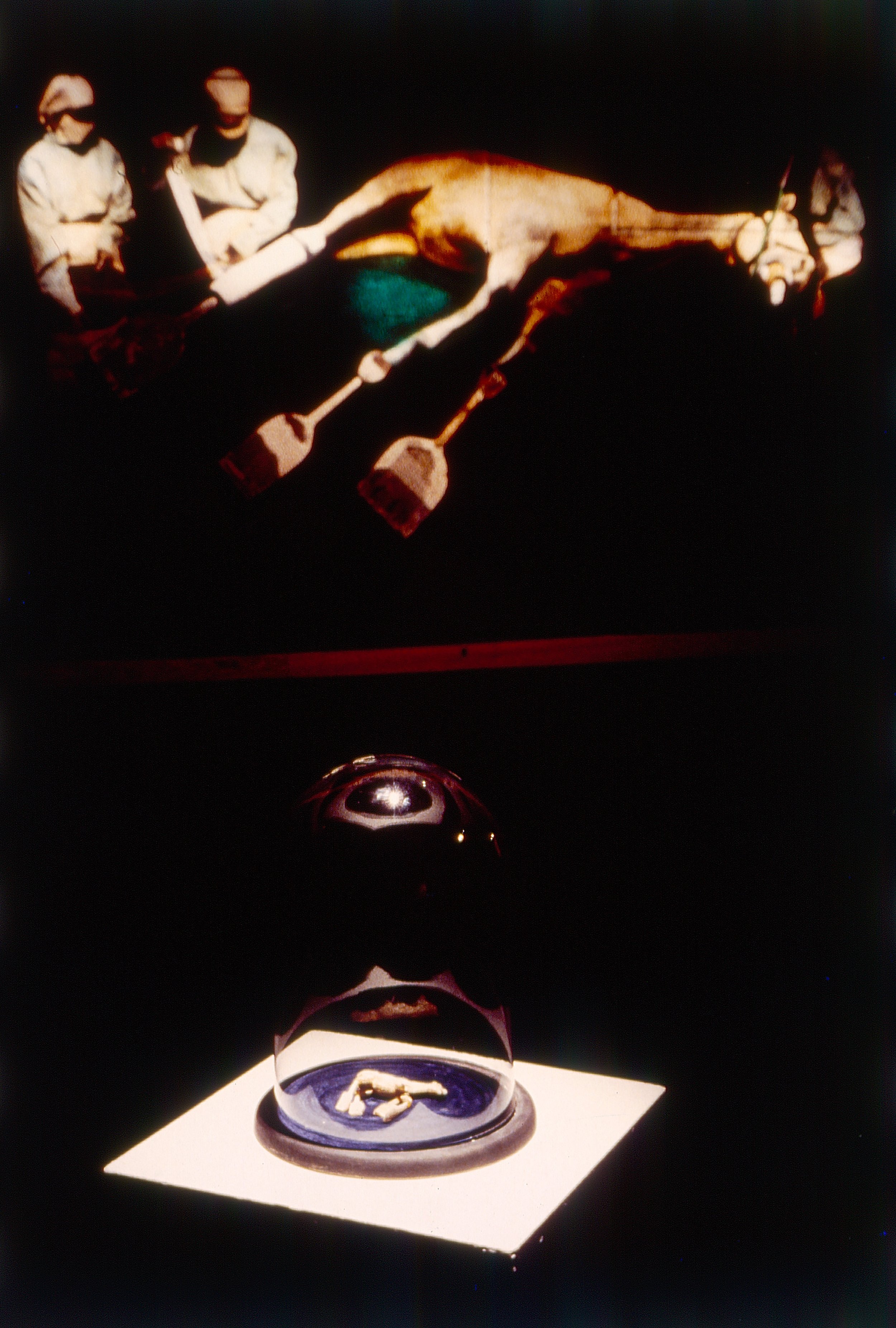

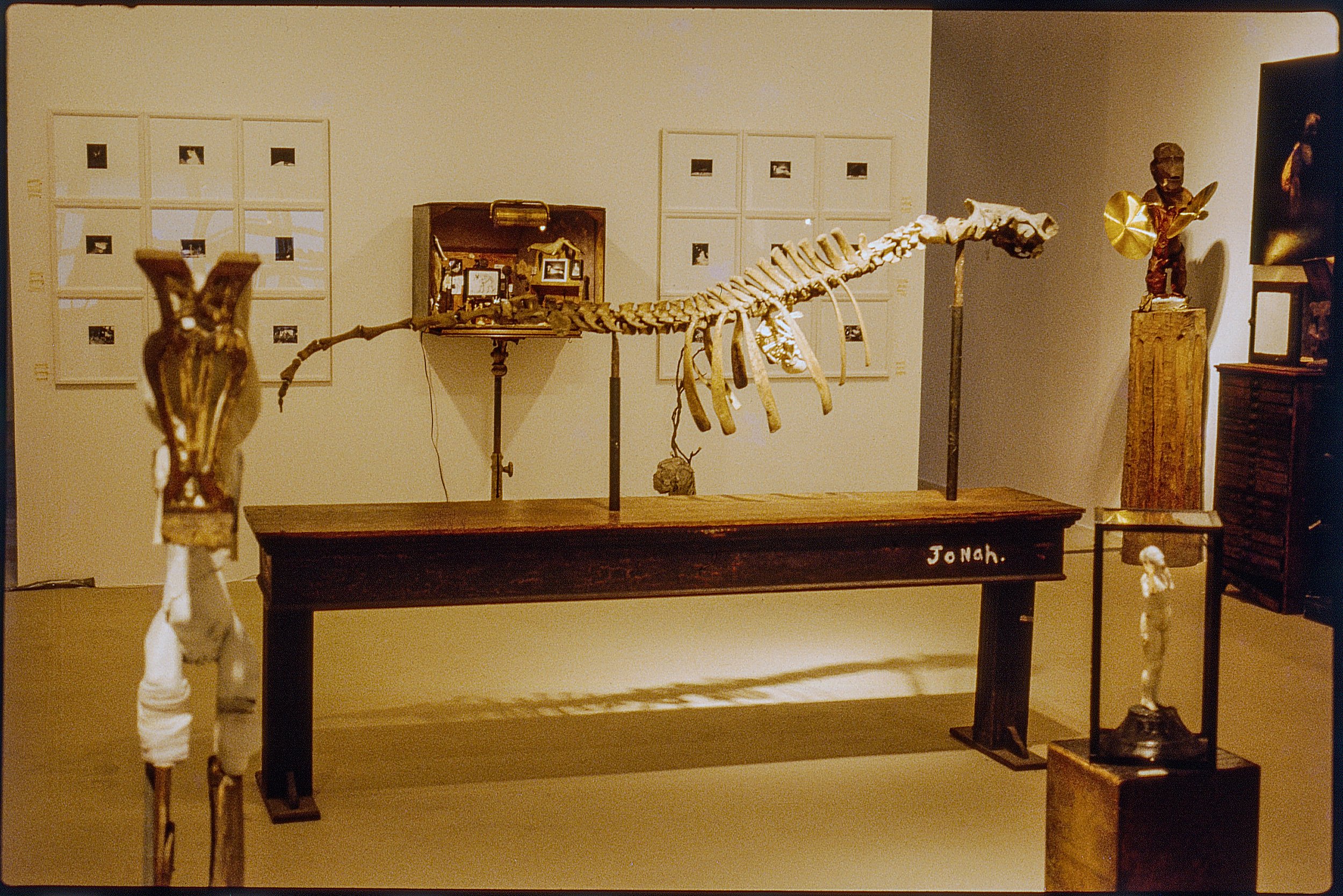

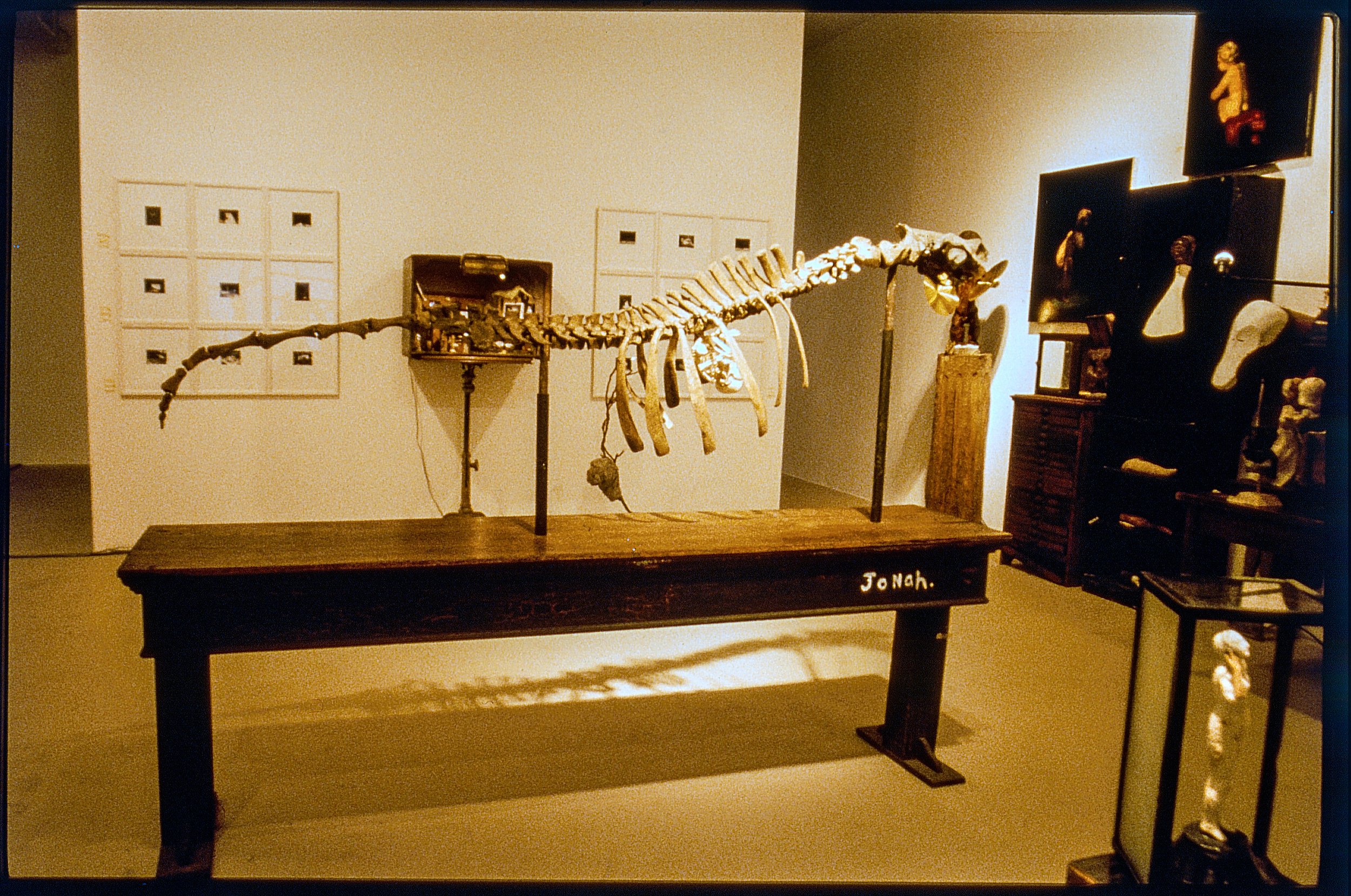
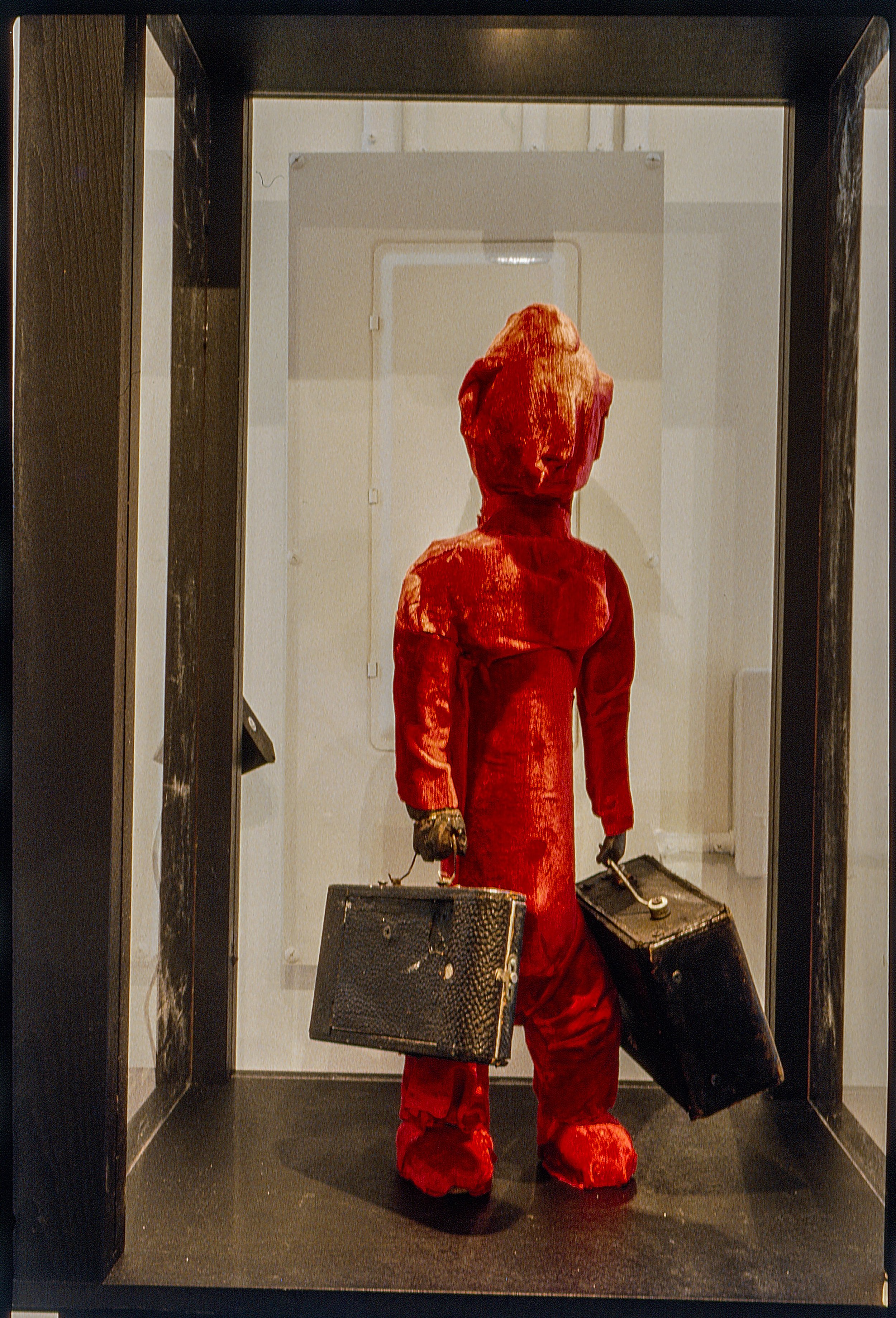

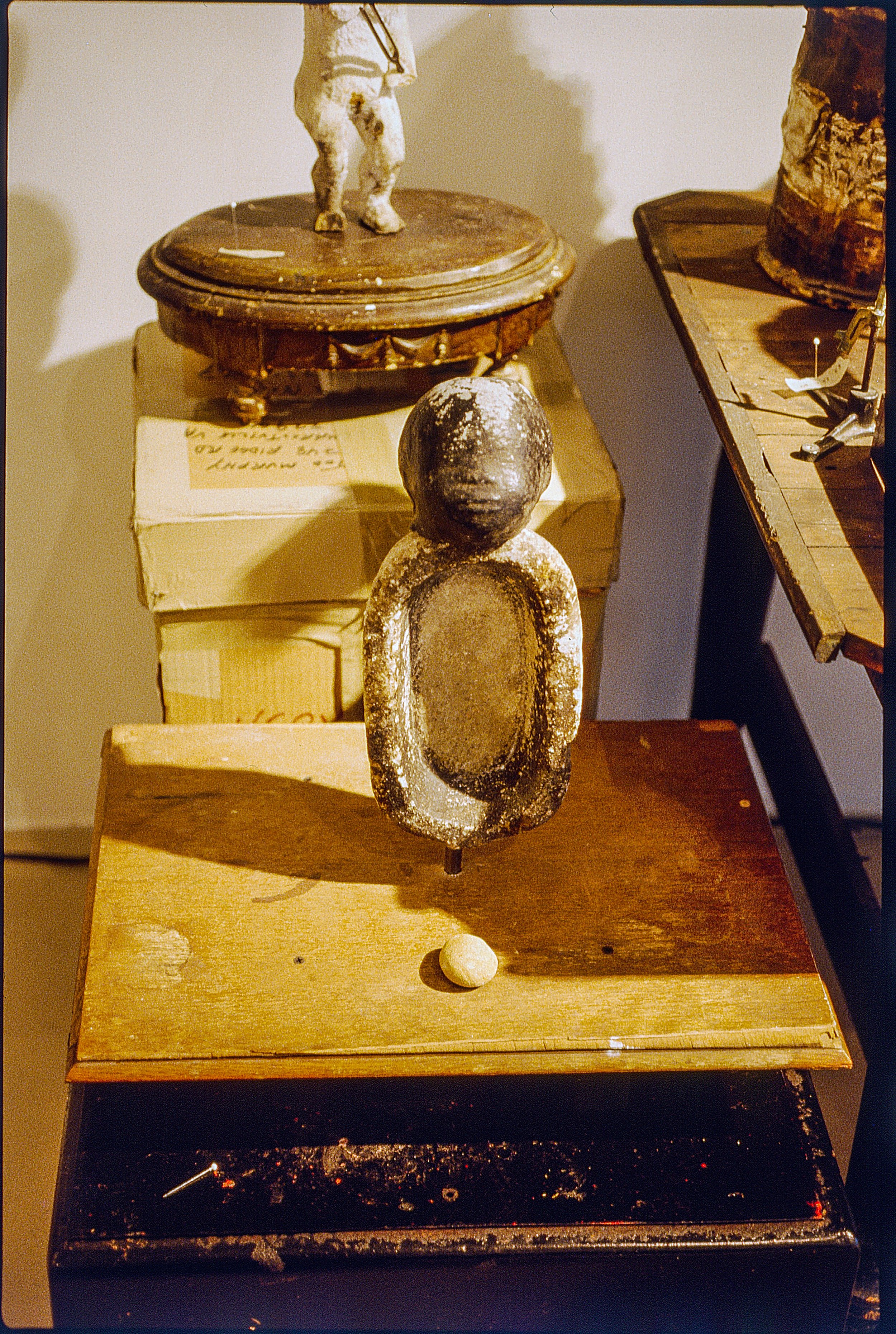


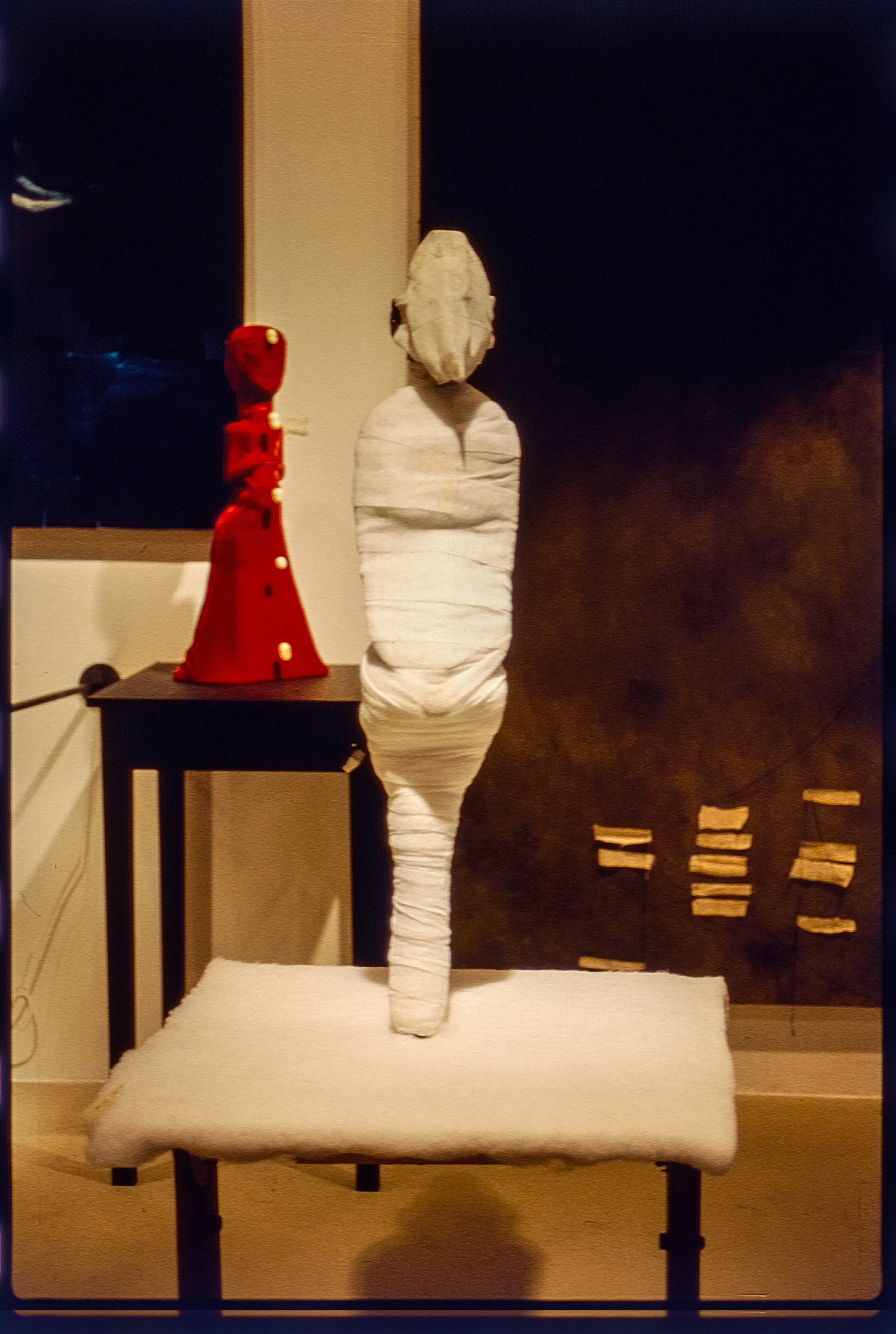
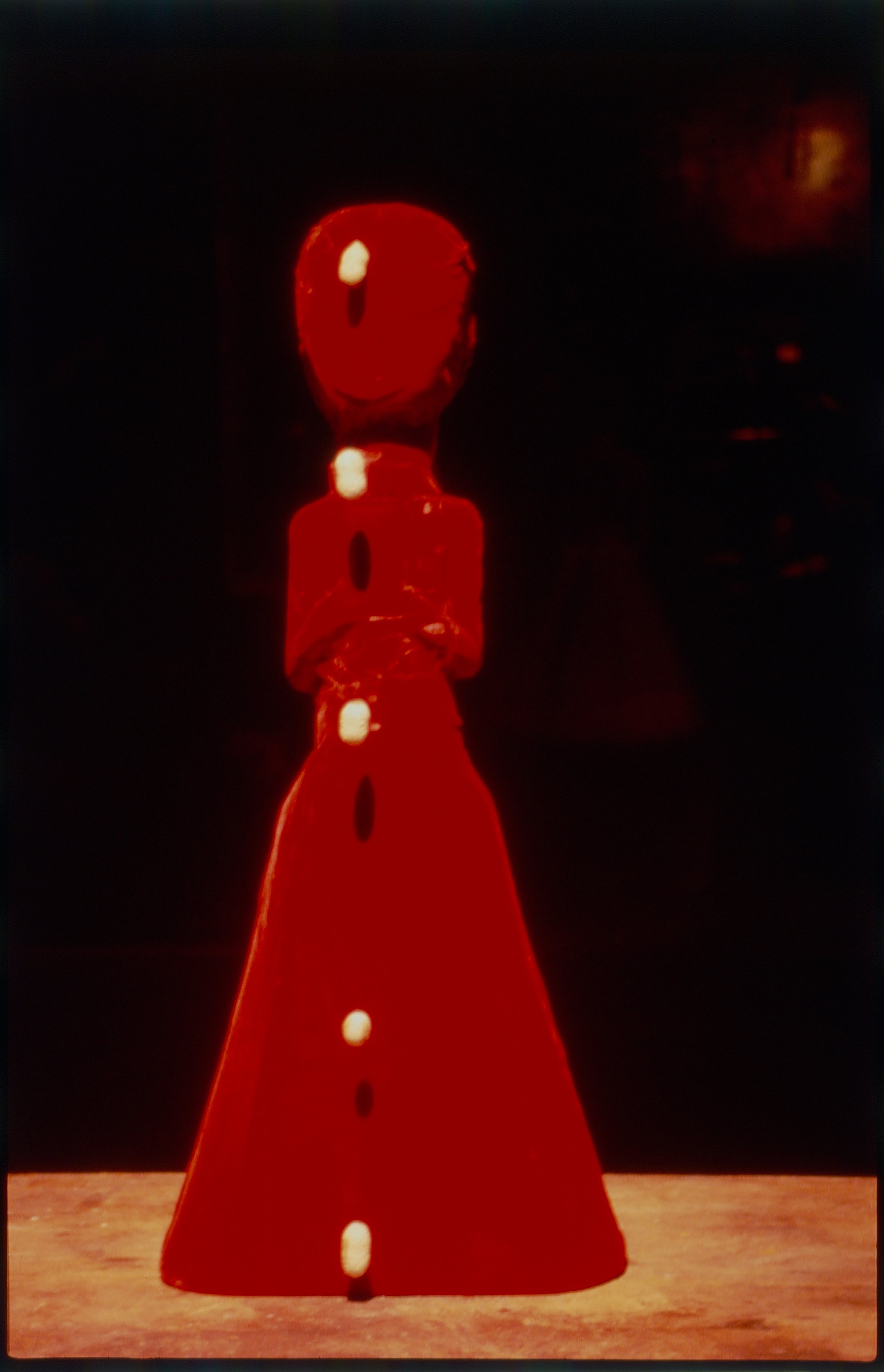


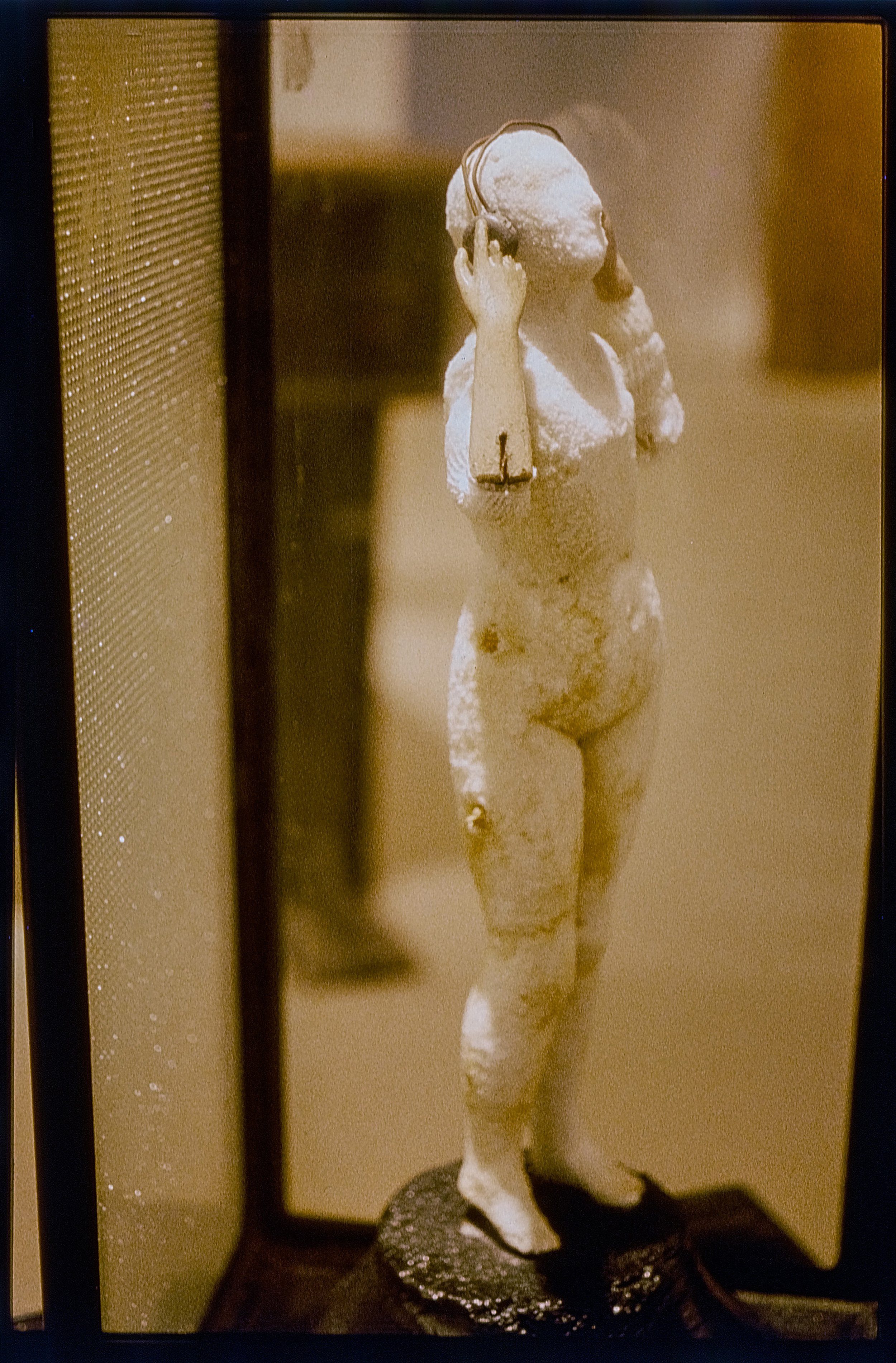
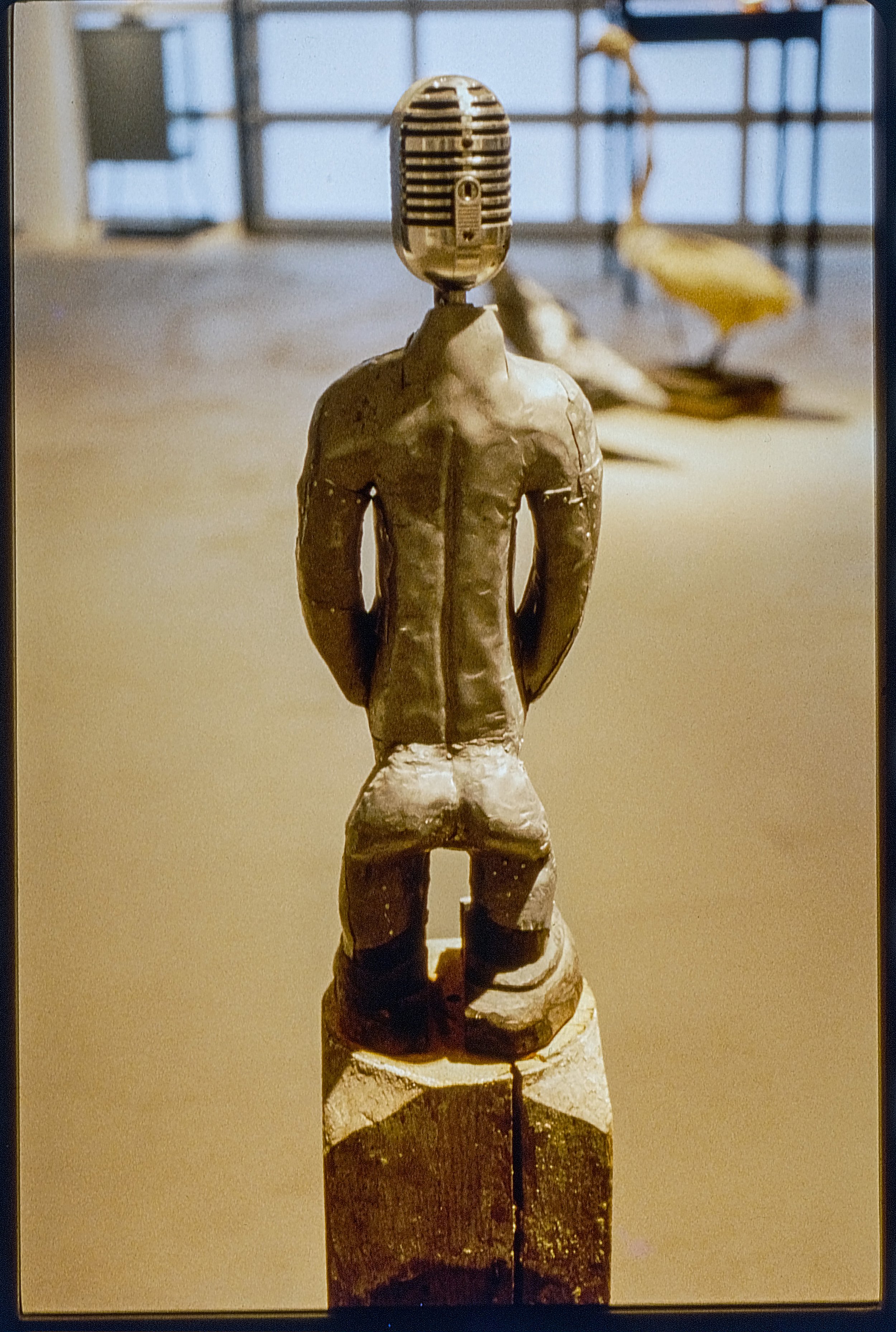

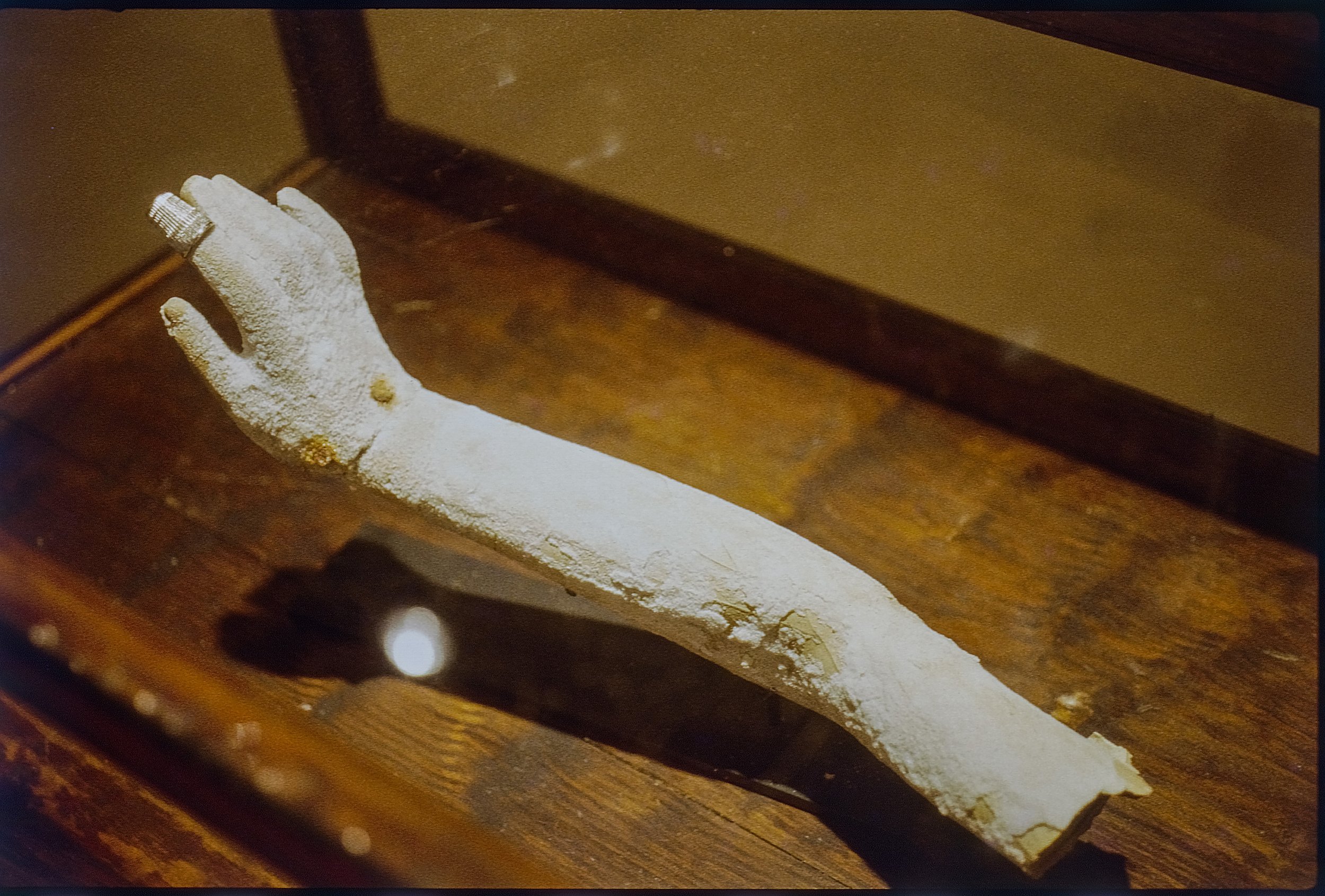
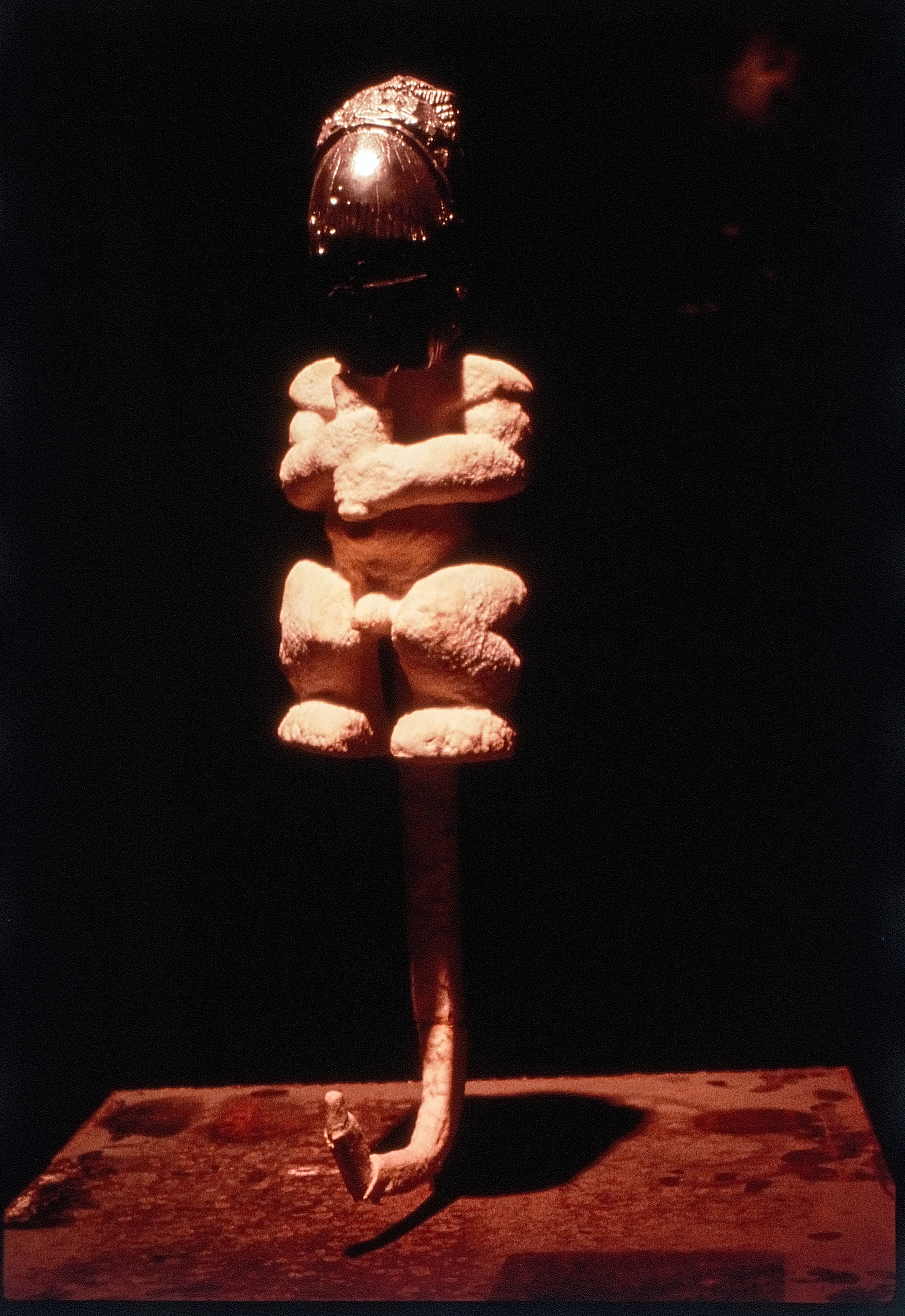

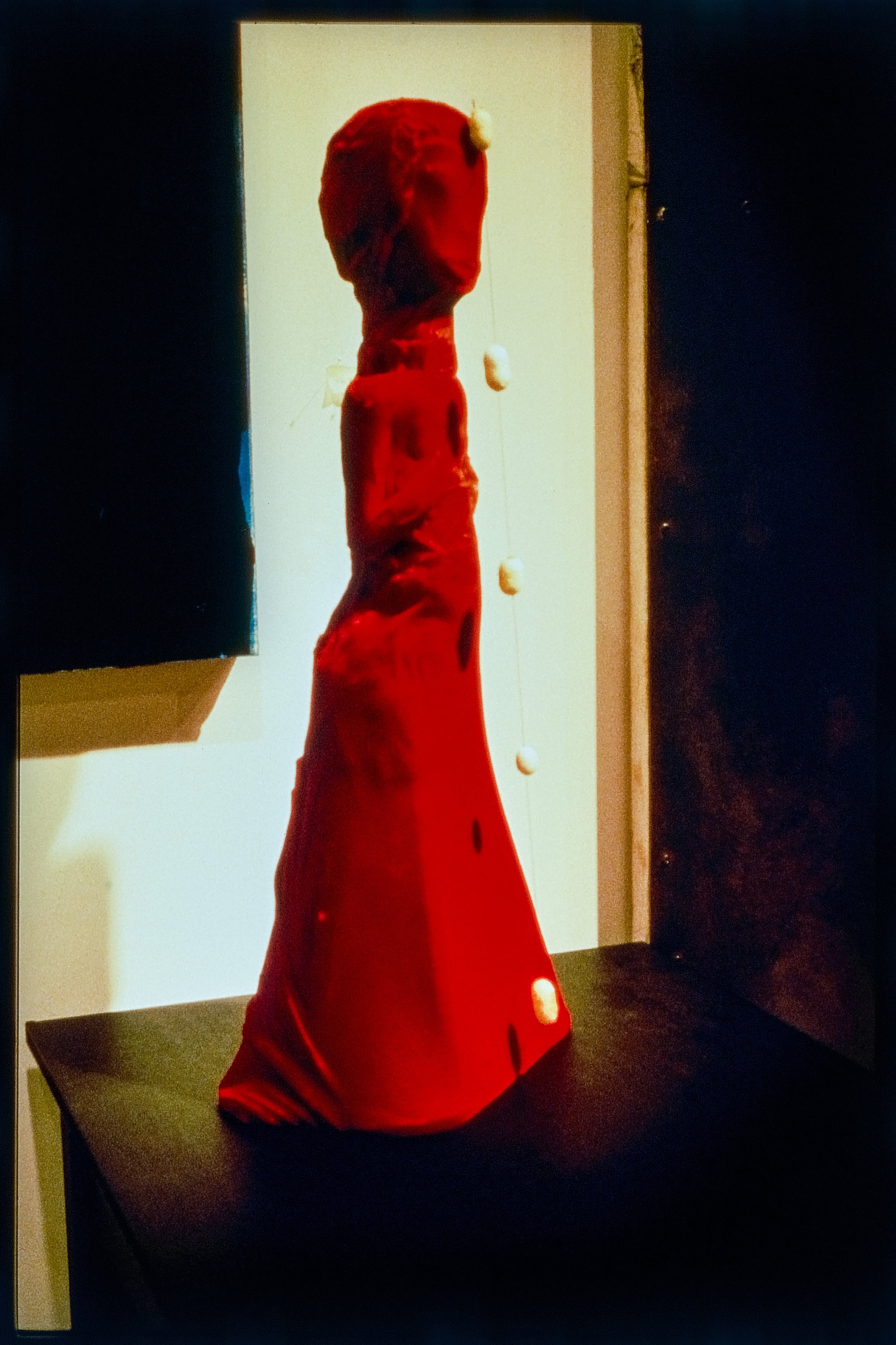
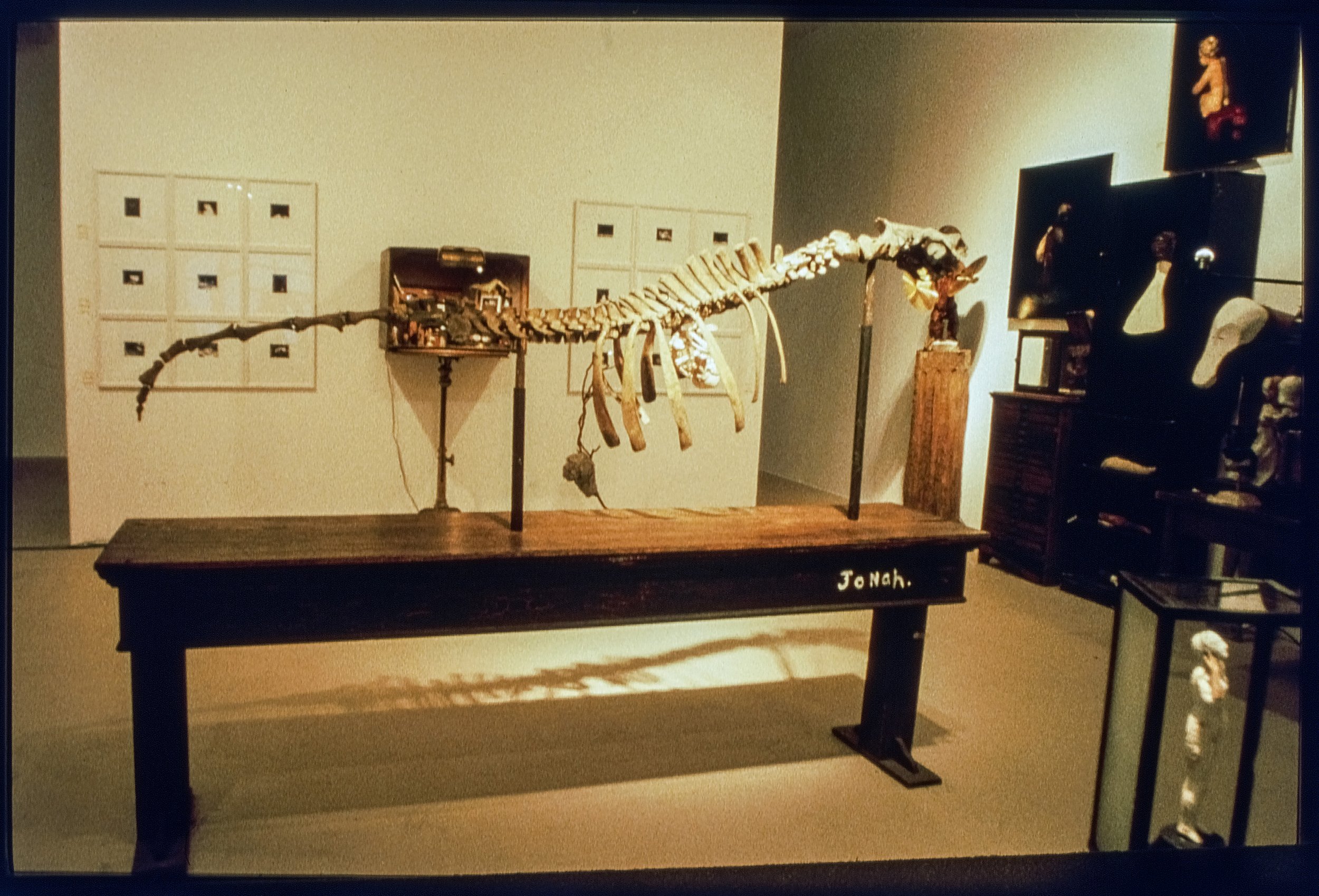
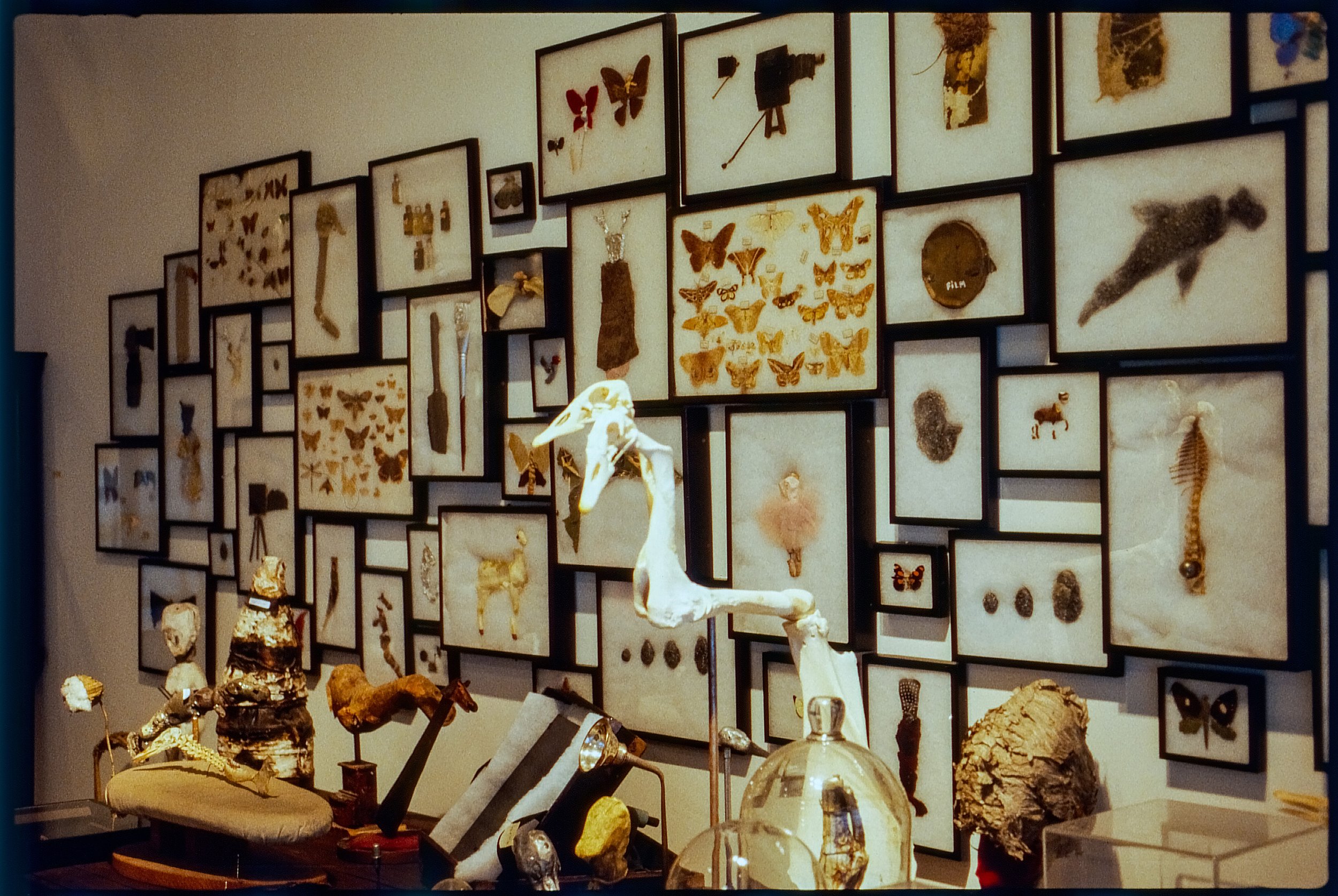
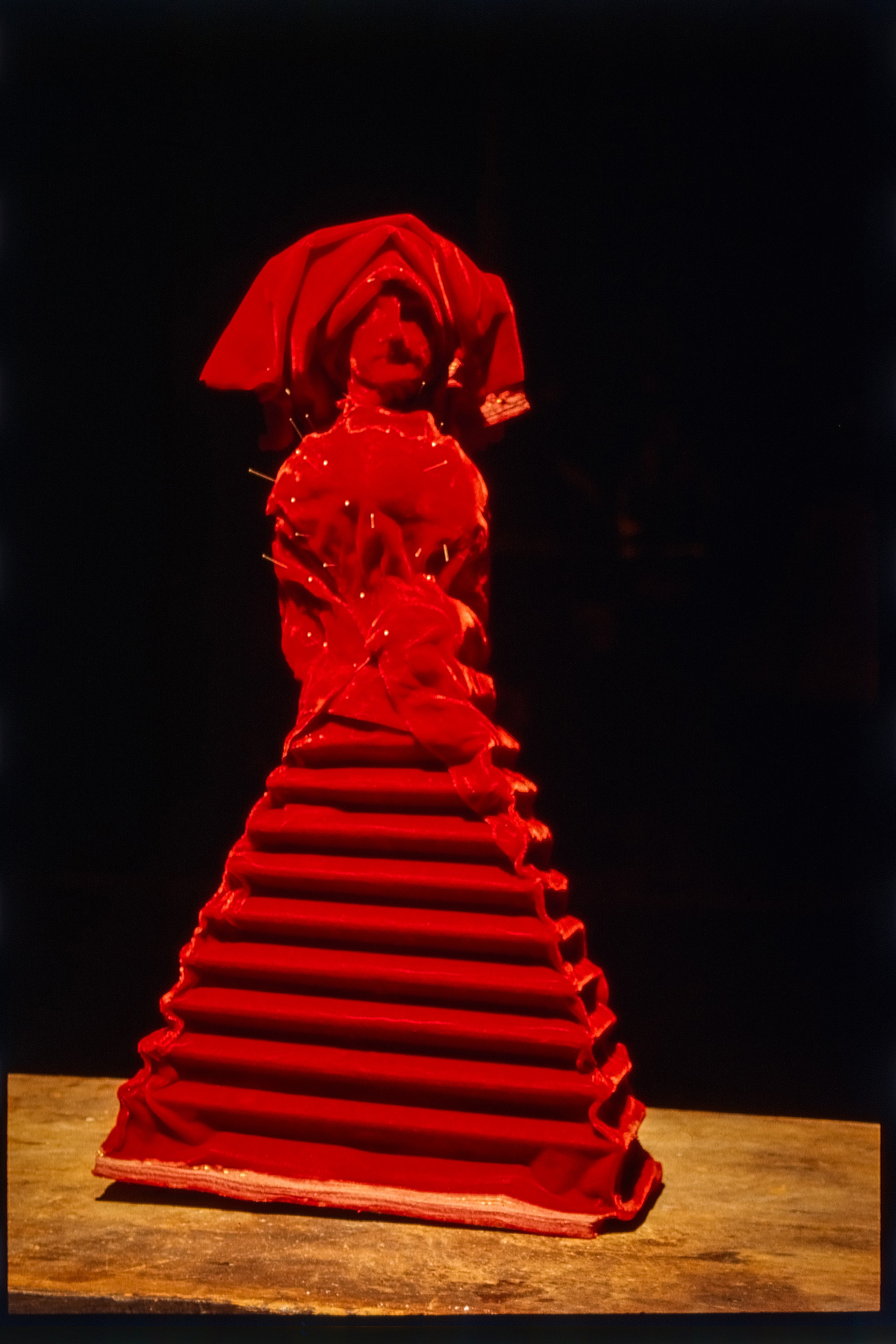
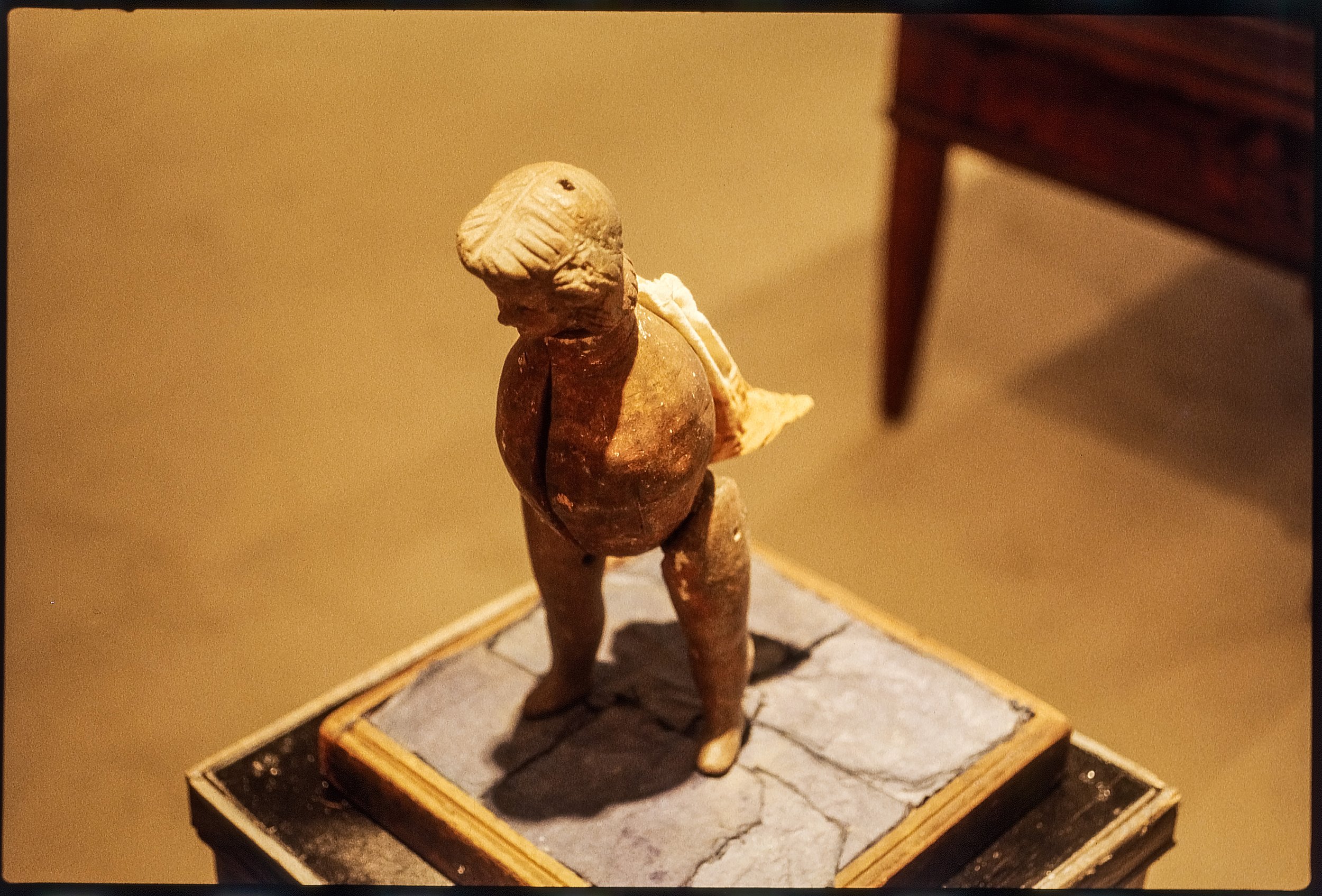

-
I read a great quote by Goethe. I’m going to misquote him but it goes something like this, “anyone who can’t synthesize three thousand years of civilization is living hand to mouth.”
TODD MURPHY and GOETHE
-
I am not afraid to reference antiquity or old masters.
Todd Murphy
-
When I say there is nothing new I mean we have been struggling with the nature of God for as long as we've been able to conceive that idea.
TODD MURPHY
-
We've been trying to come to terms with the division of the soul and this apparatus, the body.
TODD MURPHY
-
Murphy has given us the great end-of-the-millenium theme of deadpan simulation, handing creatures and cultures that never were on land or sea, but coating them with a film of antiquity and aching nostalgia that replicates the sense of loss that many people feel in this era of decontextualized digitally.
Cullum, Jerry. Todd Murphy, Sculpture, Volume 17, Number 6, July/August: 1998, p. 70-71.
-
By suggesting that the holes in our personality can be filled by things that were never real to begin with, Murphy has reiterated the Modernist insight that (as Wallace Stevens formulated it many years ago) any final belief must be in a fiction. Whether he has taken it into the self-con-scious realm of Postmodernism or Post-Postmodernism is another matter.
Cullum, Jerry. Todd Murphy, Sculpture, Volume 17, Number 6, July/August: 1998, p. 70-71.
-
Approached via the front entrance, the installation begins with a miniature stage on which a costumed monkey capers. If Murphy means to imply that this entire jeu d'esprit is indeed only a disillusioned stage show for jaded sophisticates, he will have gone very far into the bleak territories of postmodern loss.
Cullum, Jerry. Todd Murphy, Sculpture, Volume 17, Number 6, July/August: 1998, p. 70-71.
-
But the exhibition that follows is too involved to be just an expression of disillu-sionment; it would seem that Murphy both believes and ridicules his own belief—which may be, indeed, precisely the tone of the post-postmodern era that continues to dawn around us.
Cullum, Jerry. Todd Murphy, Sculpture, Volume 17, Number 6, July/August: 1998, p. 70-71.
-
By suggesting that the holes in our personality can be filled by things that were never real to begin with, Murphy has reiterated the Modernist insight that (as Wallace Stevens formulated it many years ago) any final belief must be in a fiction. Whether he has taken it into the self-con-scious realm of Postmodernism or Post-Postmodernism is another matter. Approached via the front entrance, the installation begins with a miniature stage on which a costumed monkey capers. If Murphy means to imply that this entire jeu d'esprit is indeed only a disillusioned stage show for jaded sophisticates, he will have gone very far into the bleak territories of postmodern loss. But the exhibition that follows is too involved to be just an expression of disillu-sionment; it would seem that Murphy both believes and ridicules his own belief—which may be, indeed, precisely the tone of the post-postmodern era that continues to dawn around us. -Jerry Cullum
Cullum, Jerry. Todd Murphy, Sculpture, Volume 17, Number 6, July/August: 1998, p. 70-71.




